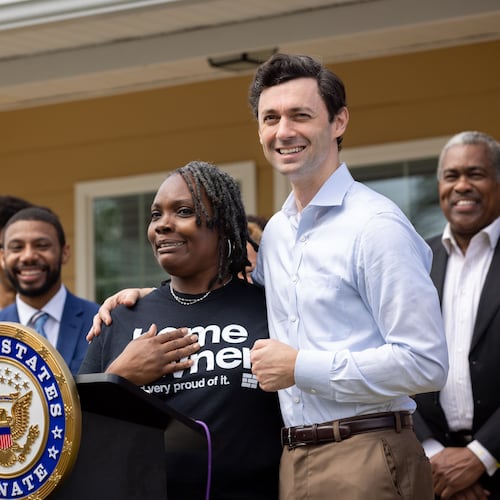The fatal shootings of six women of Asian descent in Georgia, allegedly by a young white man, has reverberated far and wide in the wake of a renewed spate of anti-Asian violence in the United States.
Cherokee County Sheriff Frank Reynolds has stated that the accused shooter, Robert Aaron Long, “gave no indicators that this was racially motivated.” Rather, he reportedly told sheriff’s officials it was his attempt to deal with sexual addiction. And Atlanta Interim Police Chief Rodney Bryant was leery of immediately labeling the shootings as hate crimes.
The absurdity of these statements is insightful: It allows us to glimpse the ways in which racist violence is denied and separated from its longstanding history in the United States. The actions of which Long is accused and his dissociative reported remarks are consistent with the history of U.S. immigration and citizenship policies as directed against Asian and Asian American women.
Credit: contributed
Credit: contributed
The Page Act of 1875 blocked Asian women from entering the U.S. through a prohibition against prostitution, reflecting a widespread assumption that Asian women were undesirables engaged in sex work, which might also leave them “diseased,” as well as immoral. In doing so, it denigrated the sexuality of Asian women, linking it to their marital or class status. Such smears were embedded in an early American skepticism about the “moral character” of immigrants or other persons of color.
This law was just one of a canon of explicitly anti-Asian laws, including the better-known Chinese Exclusion Act of 1882 preventing Chinese labor migration and forcibly deporting Chinese residents, and the Geary Act of 1885, which intensified the earlier exclusion law. The anti-Asian sentiment soon leaked into other laws, including the California 1913 Alien Land Law, which barred “alien” Asians from owning property in the state, the “Asiatic Barred Zone” Act of 1917, prohibiting Asian immigration, and various laws preventing Asian intermarriage with whites. The Immigration Act of 1924 restricted immigration from Asian countries drastically until 1952. That’s when Congress finally granted Asians born abroad the right to U.S. naturalization, but limited entry to 100 persons. It was just in 1965 that Asians were finally allowed to immigrate on equal terms.
These historical and legal continuities may be forgotten in the contemporary American consciousness, but this troubled record still haunts women of Asian descent, and degrades their status in the public eye.
The history of forced exclusions under the seemingly neutral question about “who belongs?” is denied or forgotten in a selective amnesia, if not altogether dismissed in the history of U.S. immigration and settler colonial practices. Immigration and anti-miscegenation laws have long normalized the regulation of the sexuality of women of Asian origin. Through these laws, America accommodates the fantastical deception that white men who kill, do so innocently, or without racist intentions.
The assertion that the accused shooter’s alleged actions weren’t racially motivated or were not immediately labeled hate crime because he was said to be obsessed with his “sexual addiction,” should remind us of the mantle of innocence of white supremacy: It deflects the charge of racism when the evidence is indirect, subtle, and embedded in a diluted history. White supremacy isn’t only about forcible, physical violence directed at people of color. It is expressed through national security measures that are somehow always directed towards people of color; or restrictive immigration laws that vilify the sexuality of women of color.
There are other kinder, gentler incarnations: police officials who cast doubt on the racial aspect of the murders because the suspect claims a (race-neutral!) sex addiction; reporters who write of the puzzlement of the accused shooter’s classmates — who can’t believe he could be a murderous racist because he was just “nerdy,” or “quiet”. There may be nice white neighbors who believe in inclusion but can’t quite believe that this could be racial violence because it was allegedly committed by the boy next door.
White supremacy wears many guises: its most important mantle is the one that casts doubt on the possible racist implications of murder because it’s easier to believe it was related to an individual pathology than part of a long, cruel, systematic history of institutional and other forms of racial violence by whites toward Asians.
Falguni A. Sheth is associate professor of Women’s, Gender, and Sexuality Studies at Emory University.
Keep Reading
The Latest
Featured


